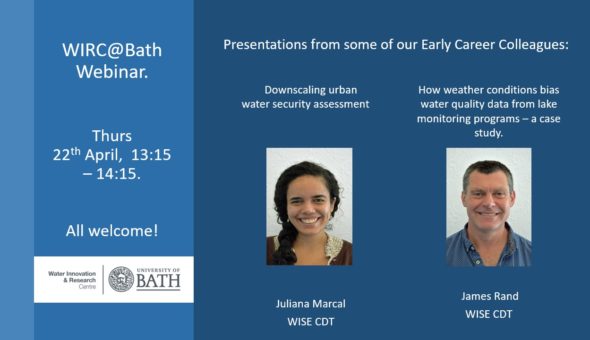We are very happy to be able to invite Dr Michael Hutchins from the Centre for Ecology & Hydrology (CEH) to host the first Department of Architecture & Civil Engineering (ACE) Seminar and WIRC Colloquium on Thursday 17th November 2016. Mike will discuss "Predicting future change in water flows and quality in urbanising catchments".
Mike is a Senior Water Quality Modeller at Centre for Ecology and Hydrology (Wallingford). His research has focused mainly on two areas, diffuse pollution and in-river processes, and understanding their effects in large river basins. He studies phytoplankton and dissolved oxygen dynamics using river quality models. The majority of his research is focused towards providing support to policies implementing legislation under the Water Framework Directive. More recently he has been leading a NERC Changing Water Cycle project “Changes in urbanisation and its effects on water quantity and quality from local to regional scale” (POLL-CURB).
Despite substantial improvements in the recent past brought about by investment in treatment of sewage and industrial wastes, and various incentives and regulations to reduce diffuse pollution, water resources in the UK are facing considerable future pressures. For example, previous modelling work in the River Thames suggests incidence of “undesirable” water quality will become more frequent in the future. Furthermore, these predictions were made without considering the impact of population growth. Here, we present a combination of approaches to evaluate impacts of urbanisation on water resources in the 9948 km2 Thames basin. Empirical analysis of two years of monitoring data in intensely monitored sub-catchments reveal the degree to which spatial variability of hydrological and water quality response can be explained by indices of impervious area. Statistical detection and attribution techniques are used to assess long-term river data, and these highlight strong signals of urban growth after climate variability is accounted for. High-resolution continuous monitoring puts the extreme periods of storm conditions in winter 2013-14 in the context of annual cycles of water quality. We illustrate how the high-resolution monitoring programme is used to simulate river hydrochemistry, and in particular to indicate how far downstream of urban areas the influence of those areas persist. At the basin scale, analysis of satellite imagery reveals landuse changes since the mid-1980s, signals used to train cellular automata models which then are employed for predictive purposes under different scenarios of urban development. We show how parametrically-parsimonious models of hydrology, sediment delivery and water quality are driven by the future landuse data to refine the existing predictions of future change in water resources across the whole Thames basin.
For more information, please contact Dr Danielle Wain.
Respond



